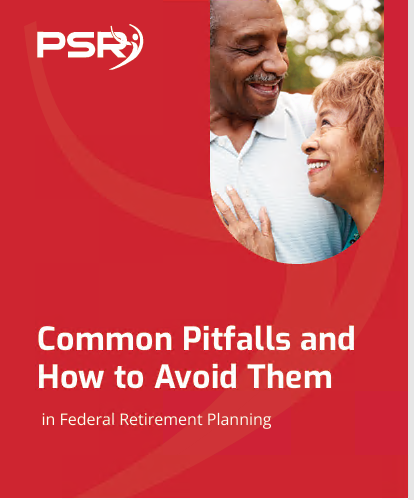The Voluntary Contribution Program (VCD)
 In my research I have heard the Voluntary Contribution Program (VCP) described as: “The Best Kept Secret in CSRS”, “The hidden Treasure That No One Seems to Find” and “A Golden Opportunity to Create Tax Free Income”.
In my research I have heard the Voluntary Contribution Program (VCP) described as: “The Best Kept Secret in CSRS”, “The hidden Treasure That No One Seems to Find” and “A Golden Opportunity to Create Tax Free Income”.
There is but one group of people in the United States that has the opportunity to create a massive Roth account almost at will. Only the CSRS employee, via the seldom-used Voluntary Contributions Program (VCP)
- Also Read: FAA, Law Enforcement, and Special Federal Employee Categories—Here’s What Makes Their Retirement Unique
- Also Read: Blending Private and Public Sector Retirement Plans Is Complicated—Here’s Where Couples Get It Wrong
- Also Read: The Silent Shift in Postal Service Retirement Benefits That Could Change Everything by 2026
Federal employees are enrolled in one of two retirement systems. The older system, established in 1920 and phased out after December 31, 1983, is called the Civil Service Retirement System (CSRS). It automatically covers all full-time and part-time employees who entered government service prior to January 1, 1984. The other federal government retirement system is the Federal Employees Retirement System (FERS). All full-time and part-time employees entering government service after January 1, 1984, have been placed in FERS.
Unfortunately, federal employees covered under (FERS) are not eligible for the VCP. But, other planning options exist and should be explored. That is why you should always consult a qualified advisor who is an expert in both the FERS and CSRS retirement systems.
As a CSRS employee, however, you are eligible for the VCP and you can put up to 10% of your aggregate base pay into your CSRS Voluntary Contribution Program (VCP). This is 10% of your accumulated pay over you entire CSRS work history.
The advantages of the VCP are the ability to roll the contributions into a Roth IRA. Roth IRAs are different than Traditional IRAs or Rollover IRA (which is where an employee may put their TSP funds upon retirement). The main difference is the taxation of Roth IRAs vs. Traditional IRAs. Distributions from a Roth IRA can be entirely tax-free. Meaning, that, if a CSRS employee uses the VCP correctly, any contributions they make to their VCP could grow tax-free for the rest of their lives – a phenomenal opportunity.
Sadly, not many CSRS employees take advantage of the VCP. CSRS employees have an amazing chance to use the VCP in a process that will create a Roth retirement account with completely tax-free earnings. Federal employees can use the VCP as a vehicle for quickly creating a substantial Roth IRA. Few people have even heard of the VCP to Roth conversion, let alone know how to use it to the maximum advantage.
At first glance the VCP may seem like just another program offered to employees to enhance their retirement. However the VCP is a very unique benefit. The VCP is a “qualified” account, like a Traditional IRA or your TSP. But, it is different in two important ways: taxes and limits.
How the VCP works;
First, taxes: The money you put in the VCP is after-tax money. The interest is tax-deferred. So your VCP will have a mix of after-tax and tax-deferred money. This mix is important to understand when you transfer your account. The mix will vary depending on how long you have been contributing to the account.
Second, limits: The 10 percent of lifetime salary that can be contributed could add up to more than six figures for some CSRS employees. This is huge! Compare that to an IRA:
If you’re younger than 50, then your 2014 contributions to a traditional IRA or a Roth IRA are limited to $5,500 or the total of your taxable compensation, whichever is smaller. If you’re 50 or older before the end of the year, then you’re allowed to contribute up to an additional $1,000. To make the maximum contribution your adjusted gross income must be less than $114,000 if you’re single, or $181,000 as a married couple filing jointly. If your income is above those limits, the amount you can contribute is reduced and eventually phased out completely. If you are a participant in an employer sponsored retirement plan, your limits could even lower.
The fantastic thing is you can transfer your entire Voluntary Contributions Program to an IRA and you are not subject to the limits or income restrictions. That can add up to a substantial amount of money.
Many CSRS employees approaching retirement have not been funding the VCP. You can make up those contributions at any time. Remember you can contribute up to 10% of your accumulated lifetime earnings. If you’ve been working for the Federal Government for a long time, this could be quite a large amount.
For example, if you earned an average of $60,000 a year over your career and worked for 30 years you would have $1.8 million in total earnings over your entire CSRS work history; In this example, you could contribute up to $180,000 to your VCP (10% of 1.8 million).
You can contribute money to your VCP over your career, over several payments, or even with just one big check close to retirement.
Why is this opportunity so valuable? Because there are two things you can do with your CSRS Voluntary Contribution money. You can buy a VCP retirement annuity or transfer the money to a Roth IRA.
First, buy a VCP Annuity at Retirement: The VCP program was originally designed to allow CSRS to put more money in and buy an additional retirement annuity.
Second, transfer the Money: IRS Notification 2008-30 allows an employee to rollover their VCP to a Roth IRA. This is a fantastic opportunity to turn after tax savings into tax-free money forever.
Federal CSRS employees CSRS can move a substantial amount of taxable assets through the VCP to a Roth IRA and by doing so, you can create a rather large Roth IRA and possibly allow these same contributions to grow for you, Tax-Free, for the rest of your life. Assets that earn taxable interest such as stocks, mutual funds, certificates of deposits, savings accounts or any taxable account that you annually receive a 1099 on from the IRS can be moved through the VCP to a Roth IRA and you will never receive a 1099 again. The earnings on the Roth IRA are tax free!
Why is taking advantage of tax-free growth so important? You have to ask yourself where you think taxes are going in the future. How is the government going to pay down the 17 trillion dollar national debt? How will they fund the current and new social programs in the future? I feel taxes are going to be significantly higher in the future.
When taxes go up that means that your taxable retirement income will be further reduced by taxes leaving you with less to spend. Either you’ll have to reduce your lifestyle, or pull more money out of your accounts to pay the higher taxes.
By placing a portion of your retirement money in a Roth IRA, increasing tax rates will not affect your income from that account. Furthermore, we all face increased longevity and many of us will need to plan for several decades of retirement. Tax-free growth can make a huge difference on how much spendable income you will have during retirement. In addition to taking income from a Roth IRA it can be passed to your heir’s tax free unlike a Traditional IRA or TSP.
Just imagine the difference; if you have $100,000 in your TSP growing at 8% during retirement, vs. $100,000 in a Roth IRA (using the VCP to fund it) growing at the same 8%.
Ex. 1: $100,000 @ 8% = $8,000. Distributions coming from your TSP or a Traditional IRA are taxable. If you’re in a 25% tax bracket that means you would pay $2,000 of taxes each year and would only have $6,000 to spend.
Ex. 2: With the VCP/Roth account the $100,000 at the same 8% would mean $8,000 of tax-free income a difference of $2,000 per year.
This great opportunity does come with its own degree of difficulty a if you are considering engaging in this you should absolutely seek out the help of a professional who understands your retirement benefits along with the paperwork and process necessary to make this happen. The process outlined above, though simple in theory, is actually quite complicated and even the smallest mistake may have enormous financial consequences. For example, earnings on the funds while in the VCP will be taxable at transfer, unless rolled into the TSP. If you funded your account with a lump sum or several contributions close to retirement. The deferred interest will be very little. But, if you have been contributing to the VCP your entire CSRS career, the deferred interest could be substantial.
Also, there can be no outstanding deposits or re-deposits prior to funding a VCP. These planning techniques are part of the current tax law and as of 2014, there are still no income limits on conversions to Roth IRA accounts. Technically, the income limits on Roth conversions were repealed as of 1/1/2010. As it stands, there is no set date for the income limits to return. But, federal policies, laws and regulations continually change. For these reasons (among others), it is advisable that you seek out financial guidance and advice from a financial planner who is knowledgeable and experienced with CSRS and the VCP to Roth Conversions process.
In conclusion, the VCP, when used for a Roth Conversion, can add a significant tax free component to your retirement income and a tax free legacy to your heirs. For the right individuals this can become the cornerstone of their financial plan. With education, proper planning and advice from the right financial professionals you can take full advantage of all of the programs offered to.
Mark Sprague
Sprague Financial Network








